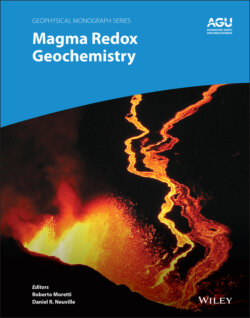Читать книгу Magma Redox Geochemistry - Группа авторов - Страница 13
ABSTRACT
ОглавлениеThe basic aspects of redox geochemistry are reviewed to provide a useful compendium of the redox connection between the aqueous‐hydrothermal and igneous realms of Earth. The redox description of a system is intimately coupled to the knowledge of acid‐base properties of the solvent in which redox exchanges take place. For magmas, and then silicate melts, approaches reporting the redox state were so far cantered around the sole concept of oxygen fugacity, fO2. Mastering the concept of fO2 in experimental and observational petrology was the key to constrain the processes behind the very large range of relative oxygen fugacity observed on Earth. Although current descriptions of silicate melts and magma thermodynamic properties are mainly based on oxides or mineral-like molecular components, disregarding the actual melt reactivity poses many limits in our understanding of the true chemical exchanges involving oxygen, iron and the other redox-sensitive elements. Because silicate melts, unlike aqueous solutions, lack of a full acid-base description, compositional dependencies are solved by means of empirical treatments based on oxides and their combinations. However, these can bias the interpretation of redox exchanges recorded in analyzed samples and used to identify the several processes (e.g., batch or fractional crystallization, elemental recycling, degassing, deep fluid infiltration) which characterize magma evolution and its geodynamic environment. This short compendium aims at stimulating the quest for a comprehensive and unifying picture of the acid-base and redox properties of melts from which we could extrinsic its reactivity in way similar to aqueous solutions and molten salts.
